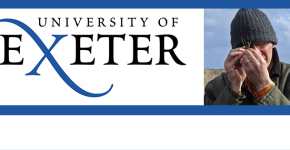Category: Biology
-

Nikos Solounias, New York Institute of Technology – Giraffe Necks
How did giraffes get such long necks? Nikos Solounias, professor of anatomy at the New York Institute of Technology, explains the evolution of this iconic feature. Nikos Solounias is a professor of anatomy at NYIT College of Osteopathic Medicine. An expert in modern and paleontological ungulate anatomy and biology, he has more than 40 years…
-

Leslie Knapp, University of Utah – Howler Monkey Calls
Does a deeper voice lead to better chances of reproducing for male howler monkeys? Leslie Knapp, professor and chair of anthropology at the University of Utah, determines that female howler monkeys might want to stay away from the Barry Whites of the bunch. My research focuses on major histocompatibility complex (MHC) genes, which are critical…
-

Emily Lescak, University of Alaska Anchorage – Evolutionary Timescales
How long does it take for a species to evolve? Emily Lescak, postdoctoral fellow at the University of Alaska Anchorage, examines how one freshwater fish shows evolution can take place much faster than previously thought. Dr. Emily Lescak is a postdoctoral fellow at the University of Alaska Anchorage. She uses threespine stickleback fish as a…
-

Mads Daugaard, University of British Columbia – Malaria Vaccine and Cancer
Chemotherapy can save lives but also be debilitating. Mads Daugaard, senior research scientist and assistant professor in the department of urology at the University of British Columbia, explores how a sugar protein may be the answer to an easier method of treating cancer. Dr. Mads Daugaard is a molecular biologist specialized in tumour-associated stress signaling…
-

Franco Pestilli, Indiana University – Re-discovering A Lost Part of the Brain
Did scientific rivalry delay an important discovery in brain research? Franco Pestilli, assistant professor in the department of psychological and brain sciences at Indiana University, examines how a once forgotten discovery may bring huge benefits to our health. Franco Pestilli is an assistant professor in the Indiana University Bloomington College of Arts and Sciences’ Department…
-

Leo Fleishman, Union College – Anoles
How do you show off your colors in a dark environment? Leo Fleishman, professor in biology at Union College, discusses how one animal has found a way to let its colors shine in the shade of the forest. Leo Fleishman is a professor in the Biology Department at Union College, where he teaches courses in Introductory…
-

Jackie Dudley, University of Texas at Austin – Gene Therapy
An accidental discovery could lead to big advances in treating viruses. Jackie Dudley, professor of molecular biosciences at the University of Texas at Austin, discusses this exciting finding. Jackie Dudley is a professor of molecular biosciences at The University of Texas at Austin whose research focuses on retroviruses, such as human immunodeficiency virus (HIV), and…
-

Phillip Sponenberg, VaTech – Geese & Turkeys
Dr. Phillip Sponenberg has become our resident zoology expert contributing previous pieces on domestic extinction, Choctaw hogs, and even adorable fainting goats. Today, this Virginia-Maryland Regional College of Veterinary Medicine professor of pathology will tell us all about geese and turkeys. Happy Thanksgiving! Dr. Phillip Sponenberg is a professor of pathology and genetics in the Department of…
-

Blaine Pfeifer, University at Buffalo – E. Coli
Does E. Coli have a positive benefit to humans? Blaine Pfeifer, Associate Professor of Chemical and Biological Engineering at the University at Buffalo, explores this question. Dr. Pfeifer’s work seeks to influence cellular, metabolic, and process events required to produce new therapeutic products. As an example, he is studying how to engineer E. coli to generate…

